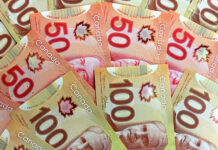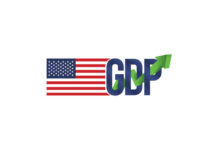Readers should probably stop watching US stock markets for economic wisdom, as the price action overnight confirmed that part of the financial world has as little future insight as anywhere else. Last week, US equity markets rallied on the back of the arcane logic that a US recession would mean a lower terminal Fed funds rates and thus, was bullish for stocks, especially bombed-out tech stocks. That premise was boosted by weak Michigan Consumer Sentiment data last week.
Overnight, even weaker US Conference Board Consumer Confidence data provoked the opposite reaction, with US stocks plummeting. The nervous outlook was helped along by the Richmond Fed Manufacturing Index plummeting to -19 overnight, joining the ugly numbers from the Dallas Fed the night before. Both the Richmond and Dallas Services Indexes also fell heavily overnight. Equity investors continue to conjure up excuses to buy the dip, and I’m sure China cutting hotel quarantine to one week yesterday will elicit a similar reaction over there. Just remember, the virus only has to only get lucky once in China’s covid-zero world.
If the equity market’s hope versus reality keeps revealing itself to be a paper tiger, currency markets appear to be something resembling the adult in the room. With the stock market rallies last week boosting risk sentiment across asset classes, the US Dollar traced out a modest retreat as Fed hiking zeal was downgraded. As equity markets decided that a recession isn’t good for stocks, after all, the US Dollar index managed to unwind almost all of last week’s retreat in just one session. USD/JPY is back above 136.00 this morning, and the Indian Rupee took a pasting to a new all-time low. Notably, US yields barely moved overnight so the Yen and INR have no excuse on that front. It seems that markets are far more comfortable rushing into the apparent safety of the US Dollar at the first sign of trouble, and I suspect that it was only a few Asian central banks’ offers around that stopped the rest of USD/Asia from rallying.
The G7 Summit continues to be very busy with most attention focused on a mechanism to cap the price of Russian oil on international markets. Reuters is reporting that talks with China and India, about participating in the measures were “positive.” I’m still unsure about how such a mechanism would work, it seems to involve ramping up insurance premiums for seaborne cargoes so high that it drops the net price Russia would receive. It would need to be high enough to keep Russia pumping, but low enough to entice China and India to sign on, and not open arbitrage opportunities that would upset the other OPEC+ members. Game theory supercomputers will be burning the midnight oil, me thinks. I’m not sure how that plays with Russia and China’s “unlimited” partnership mind you?
For you and I, it would mean very little price-wise, and that’s certainly what the oil market thinks as well, as Brent and WTI futures rose once again overnight. The sell-off early last week looks increasingly like a culling of speculative positioning and I won’t buy a material fall in oil prices until the backwardation in the Brent and WTI futures curves shrinks markedly. That didn’t happen last week. OPEC and OPEC+ meet today and tomorrow, but we should expect a rubber stamp. Given that OPEC+ can’t even meet its present targets, and hasn’t for a long time, I expect no bearish surprises.
Today has been a mixed bag for Asia data-wise. South Korean Consumer Confidence fell sharply to 96.4, although local markets are likely more focused on reports that the Bank of Korea may enact a large interest rate hike if this month’s inflation data is above 6.0%. In contrast, Japan’s Retail Sales climbed to 3.60% YoY in May, with April’s number revised up slightly to 3.10%. The gradual reopening of the economy still seems to be playing out well domestically. However, Bank of Japan Governor Kuroda stated today that the increase in Core CPI above the targeted 2.0% was almost entirely due to the rise in energy prices. With that in mind, hold off on taking on the BOJ in the JGB market I say.
Elsewhere, Australian consumers are refusing to go quietly. Despite sharp cost-of-living increases, Australian Retail Sales unexpectedly rose by 0.90% this morning for May, the same as last month’s number. I suspect this might be as good as it gets though, and with the Australian Dollar barely reacting to the data, the markets seem to think so as well.
Vietnam Industrial Production has outperformed today, and if Thailand Industrial Production does the same, as expected, this afternoon, that bodes well for the Asian ex-China PMI releases on Friday, although China’s PMI releases tomorrow and Friday have downside risks. Equity markets are holding up fairly well in Asia today, so either Asia is getting fed up following Wall Street’s histrionics, or the easing of inbound covid quarantine restrictions announced by China yesterday, is providing support.
This afternoon sees a slew of European business and consumer confidence data releases, as well as German Inflation for June. But all eyes and ears will be on the ECB summit in Portugal. ECB Chair Christine Lagarde will be speaking again after hawkish remarks yesterday. The main event will be Federal Reserve Chair, Jerome Powell, who is also speaking at the summit. As ever, markets will be dissecting his every word, looking for hints in this case, that the Fed is wavering on its hawkish bias as recessionary fears rise. They are likely to be disappointed, but it should be good for some intraday vol.
Asian equities resilient after Wall Street retreat
As mentioned above, Wall Street retreated sharply overnight as the FOMO gnomes decided that weak consumer confidence numbers and forward expectation sub-indices were perhaps not good for stock prices after all. The S&P 500 fell by 2.01%, the Nasdaq slumped by 2.98%, while the Dow Jones slipped by 1.58%. In Asia, the usual dip-buyers have appeared, lifting Nasdaq futures by 0.50%, and S&P and Dow futures by 0.20%.
Asian markets are mostly steady today, except for the Nasdaq correlated, retail-dominated ones such as Japan, South Korea, and Australia. China’s shortening of hotel quarantine requirements to a week announced yesterday is proving a supportive factor in the region today, although I can’t imagine it will result in a sharp increase in inbound visitors. Overall, although Asian markets are fairly much flat to lower, the falls are nowhere near reflecting the scale of the retreat by Wall Street overnight.
Japan’s Nikkei 225 has fallen by 1.05%, with South Korea’s Kospi slumping by 1.77%. the latter perhaps comminated by Bank of Korea rate hike fears. Mainland China markets have retreated more modestly, with the Shanghai Composite and CSI 300 are 0.50% lower. Hong Kong’s Hang Seng, meanwhile, has fallen by 1.0%.
In regional markets, Singapore, Kuala Lumpur and Manila have edged 0.15% higher, with Jakarta unchanged. Taipei has fallen by 0.80%. Australian markets have coat-tailed Wall Street south, the All Ordinaries falling by 1.25%, while the ASX 200 has lost 1.05%.
European markets appear set for a soft opening this afternoon after the Wall Street tumble overnight, although a move sensible response from Asia may take the edge off the negativity. Scandinavian markets could outperform once again after Turkey’s President Erdogan dropped his objections to NATO membership for Sweden and Finland overnight. Higher than expected German inflation could increase hiking fears by the ECB and weigh on equities, but realistically, it will all come down to the comments this afternoon by Ms Lagarde and Mr Powell at the ECB summit.
US Dollar stages impressive rally
The US Dollar rallied overnight, with the dollar index unwinding much of the last week’s retreat in just one session. A slump by US equities sparked a rush to safety in the greenback, even as US yields were almost unchanged. The price action suggests that bounces in risk sentiment lack conviction at this stage. The dollar index rose by 0.50% to 1.0450 overnight, easing to 104.41 in Asia. Support remains at 1.0350 and 102.50, with resistance at 105.00 and 1.0570
EUR/USD fell by 0.575 to 1.0503 overnight, rising to 1.0525 in Asia with US equity futures. Resistance at 1.0600 and 1.0650 has once again proved insurmountable and failure of 1.0500 sets up a test of support at 1.0450 and 1.0400. The single currency still looks rangebound overall and volatility will be driven by comments from Lagarde and Powell this afternoon.
Sterling fell 0.67% to 1.2185 overnight, rising to 1.2200 in Asia. It has shown surprisingly little response to Scotland’s court challenge to hold another separation referendum, with the fall overnight mostly due to US Dollar strength. GBP/USD has initial resistance at 1.2300, 1.2360 and 1.2400, with support at 1.2175 and 1.2160. Failure of 1.2160 on a closing basis suggests a renewed move lower towards 1.1950.
USD/JPY is back above 136.00 this morning, a notable signal of further Yen weakness ahead after US yields were unmoved overnight. USD/JPY climbed 0.50% to 136.15 overnight, where it remains in Asia, seeing none of the slight US Dollar weakness in other parts of the currency space in Asia today. USD/JPY has support at 134.25 and 132.00, with resistance at 136.65 and 138.00.
Asian currencies were surprisingly resilient overnight, hardly moving as the US Dollar strengthened in the DM space. The exception was the Indian Rupee, with USD/INR climbing 0.75% to 78.922 overnight, another record low. US Dollar long-covering in Asia has pushed USD/INR lower to 78.676 today but it remains well above its previous day’s close at 78.338. An easing of inward quarantine restrictions by China yesterday seems to be providing some support to regional currencies, as it is equities, and central banks have likely been smoothing via US Dollar sales. If the US Dollar rally continues this week, Asian currencies are likely to start buckling again.
Oil’s rally continues
Oil’s march higher continued unhindered overnight, with Brent and WTI posting another set of impressive gains. A surprise drop by US API Crude Inventories by 3.8 million barrels helped the bullish momentum, with markets ignoring the rise in refined product stocks. Disruptions to Libyan and Ecuadorian production were supportive, but the Macron’s remarks yesterday around Saudi Arabia and the UAE’s limited production capacity seems to have been the main driver.
OPEC meets today and tomorrow, but the meeting is likely going to be just a rubber stamp exercise this month. More important will be tonight’s US official Crude Inventory data from the EIA, which is a double header release, including last week’s delayed release due to technical issues. With two weeks of data coming out, it will be a bit of a turkey shoot tonight and we can expect plenty of volatility around the release. I am not going to predict the outcome on this one, but I believe the oil price downside remains limited.
Brent crude rose by 2.40% to $118.15 overnight but has retreated by 1.30% to $116.70 a barrel in Asia today. WTI rose by 1.90% to $111.90 overnight, falling 0.90% to $111.00 a barrel in Asia. The price action seems to be in line with the general correction lower by the US Dollar in Asia today.
Notably, Brent crude tested and held its rising longer-term support line, today at $108.00, and its 100-day moving average (DMA) last week. That is a technical development that should be respected. Brent crude has support at 115.75, and then 111.50. Resistance here at $118.50, and then $120.00 a barrel.
WTI’s technical picture has improved markedly overnight after regaining its rising 2022 support line at $108.00 a barrel. It has resistance at $112.50 which clears the way for a retest of $116.00. Support is at $109.75 and then $108.00 a barrel.
Gold is sleepless in Singapore
Gold remains the forgotten asset class, finishing 0.15% lower at $1820.00 overnight, before creeping up to $1821.00 an ounce in Asia today. A series of lower daily highs suggests that downside risks are increasing for gold prices, although it still lacks momentum to break out of the $1800 to $1900.00 range. Bring a good book until we see a large directional move by the US Dollar.
Gold has resistance at $1840.00, $1860.00, and $1880.00, the latter appearing an insurmountable obstacle for now. Support is at $1805.00 and then $1780.00 an ounce. Failure of the latter sets in motion a much deeper correction, potentially reaching $1700.00 an ounce. On the topside, I would need to see a couple of daily closes above $1900.00 to get excited about a reinvigorated rally.












